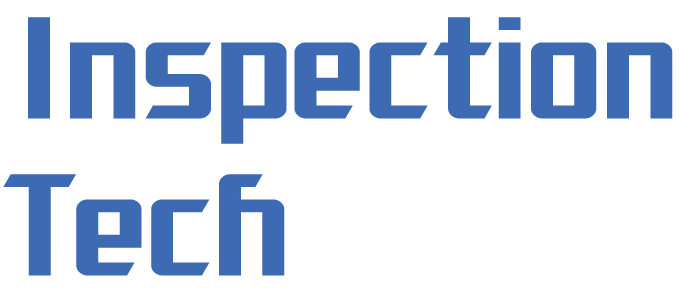Technical Library | 2024-02-02 07:48:31.0
Maximizing Efficiency: The High-Speed SMT Line With Laser Depanelizer In today's rapidly evolving electronics manufacturing landscape, optimizing efficiency, cost-effectiveness, and precision remains paramount. Businesses engaged in producing industrial control boards, computer motherboards, mobile phone motherboards, and mining machine boards face ongoing challenges in streamlining production processes. The integration of expensive equipment strains budgets, making the creation of an efficient, cost-effective high-speed SMT line a daunting task. However, a solution exists that seamlessly combines these elements into a singular, high-performance, and cost-effective SMT line. Let's delve into the specifics. A Comprehensive High-Speed SMT Line Our innovative solution amalgamates two pivotal components: a cutting-edge SMT (Surface Mount Technology) production line and a laser cutting line equipped with a depanelizer. The SMT Production Line The high-speed SMT line comprises several essential components, each fulfilling a unique role in the manufacturing process: 1. PCB Loader: This initial stage involves loading boards onto the production line with utmost care. Our Board Loader prioritizes safety, incorporating various safety light curtains and sensors to promptly halt operations and issue alerts in case of any anomalies. 2. Laser Marking Machine: Every PCB receives a unique two-dimensional code or barcode, facilitating comprehensive traceability. Despite the high-temperature laser process potentially leading to dust accumulation on PCB surfaces, our dedicated PCB Surface Cleaner swiftly addresses this issue. 3. SMT Solder Paste Printer: This stage involves applying solder paste to the boards, a fundamental step in the manufacturing process. 4. SPI (Solder Paste Inspection): Meticulous inspections are conducted at this stage. Boards passing inspection proceed through the NG (No Good) Buffer Conveyor to the module mounters. Conversely, "No Good" results prompt storage of PCBs in the NG Buffer Conveyor, capable of accommodating up to 25 PCBs. Operators can retrieve these NG boards for rework after utilizing our specialized PCB Mis Cleaner to remove solder paste. 5. Module Mounters: These machines excel in attaching small and delicate components, necessitating precision and expertise in the module mounting process. 6. Standard Pick And Place Machines: The selection of these machines is contingent upon your specific BOM (Bill of Materials) list. 7. Pre-Reflow AOI (Automated Optical Inspection): Boards undergo examination for component quality at this stage. Detected issues prompt the Sorting Conveyor to segregate boards for rework. 8. Reflow Oven: Boards undergo reflow soldering, with our Lyra series reflow ovens recommended for their outstanding features, including nitrogen capability, flux recycling, and water cooling function, ensuring impeccable soldering results. 9. Post-Reflow AOI: This stage focuses on examining soldering quality. Detected defects prompt the Sorting Conveyor to segregate boards for further inspection or rework. Any identified defects are efficiently addressed with the BGA rework station, maintaining the highest quality standards. 10. Laser Depanelizer: Boards advance to the laser depanelizer, where precision laser cutting, often employing green light for optimal results, ensures smoke-free, highly accurate separation of boards. 11. PCB Placement Machine: Cut boards are subsequently managed by the PCB Placement Machine, arranging them as required. With this, all high-speed SMT line processes are concluded. Efficiency And Output This production line demonstrates exceptional productivity when manufacturing motherboards with approximately 3000 electronic components, boasting the potential to assemble up to 180 boards within a single hour. Such efficiency not only enhances output but also ensures cost-effectiveness and precision in your manufacturing processes. At I.C.T, we specialize in crafting customized SMT production line solutions tailored to your product and specific requirements. Our equipment complies with European safety standards and holds CE certificates. For inquiries or to explore our exemplary post-sales support, do not hesitate to contact us. The I.C.T team is here to elevate your electronics manufacturing to new heights of efficiency and cost-effectiveness.
Technical Library | 2022-02-21 19:49:16.0
The ability to undertake non-destructive testing on semiconductor devices, during both their manufacture and their subsequent use in printed circuit boards (PCBs), has become ever more important for checking product quality without compromising productivity. The use of x-ray inspection not only provides a potentially non-destructive test but also allows investigation within optically hidden areas, such as the wire bonding within packages and the quality of post solder reflow of area array devices (e.g. BGAs, CSPs and flip chips).
Technical Library | 2001-05-03 11:23:09.0
In this age of global competition, world class electronics manufacturers understand that increasing profit margins is accomplished not by increasing price or lowering the quality of components and workmanship, but by increasing production yields. Post-solder inspection ensures that your customers receive good product, but by separating the good boards from the bad boards you only measure yield, not improve it. A yield (and profit) improvement strategy consists of making measurements at critical stages, as early as possible in the assembly process, and adjusting the process parameters to achieve optimal performance.
Technical Library | 2023-11-20 18:49:11.0
Non-destructive testing during the manufacture of printed wiring boards (PWBs) has become ever more important for checking product quality without compromising productivity. Using x-ray inspection, not only provides a non-destructive test but also allows investigation within optically hidden areas, such as the quality of post solder reflow of area array devices (e.g. BGAs, CSPs and flip chips). As the size of components continues to diminish, today's x-ray inspection systems must provide increased magnification, as well as better quality x-ray images to provide the necessary analytical information. This has led to a number of x-ray manufacturers offering digital x-ray inspection systems, either as standard or as an option, to satisfy these needs. This paper will review the capabilities that these digital x-ray systems offer compared to their analogue counterparts. There is also a discussion of the various types of digital x-ray systems that are available and how the use of different digital detectors influences the operational capabilities that such systems provide.
| 1 |

Our Company handle AOI (Auto Optical Inspection) and SPI (Solder Paste Inspection) Machines.
Equipment Dealer / Broker / Auctions
Hwaseong-si, Gyeonggi-do, Korea
Hwaseong-si, South Korea
Phone: +82-1029254936